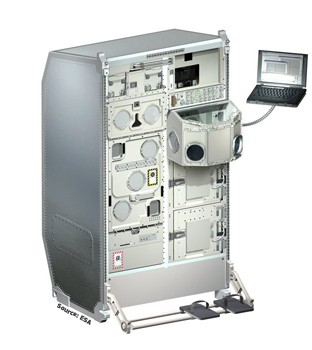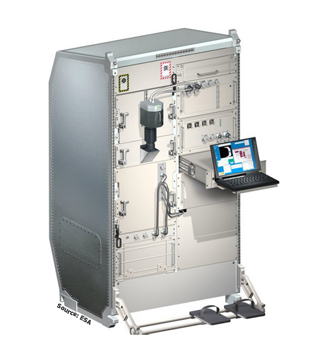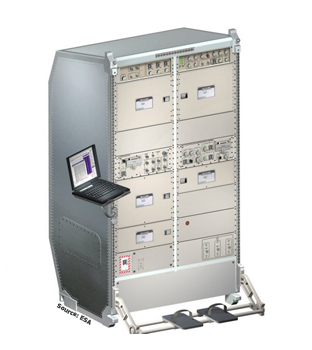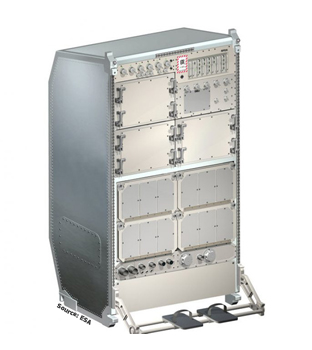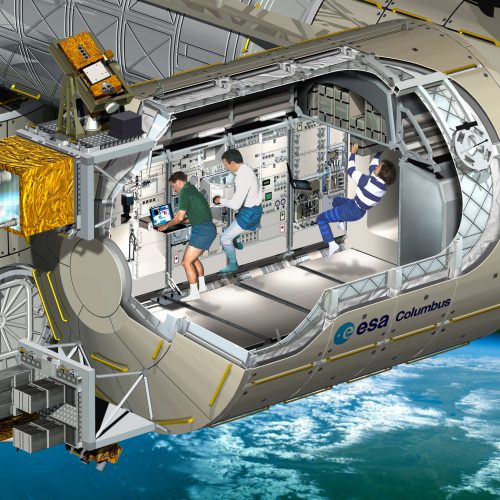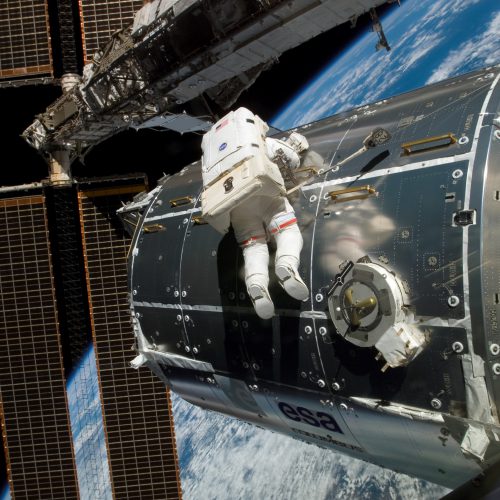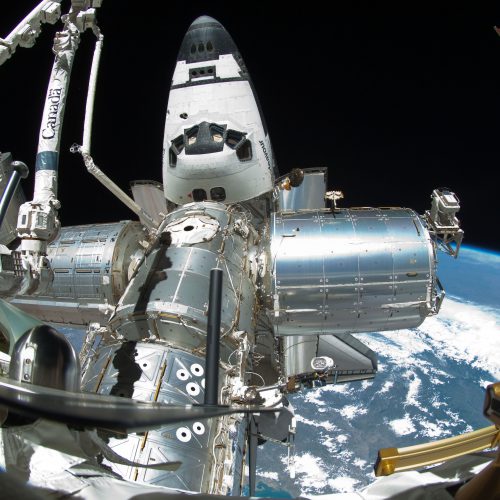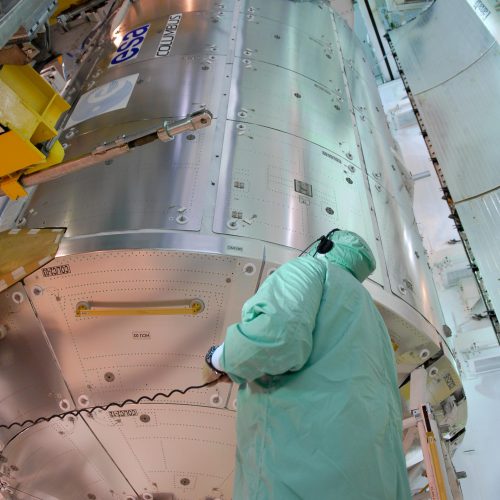Columbus Module
The science module Columbus is European Space Agency (ESA)‘s biggest single contribution to the International Space Station (ISS). The 4.5-metre cylindrical module will give an enormous boost to the station’s research capabilities. During its 10-year projected lifespan, Earth-based researchers – sometimes with a little help from the ISS crew – will be able to conduct thousands of experiments in life sciences, materials science, fluid physics and a whole host of other disciplines, all in the weightlessness of orbit.
The pressurized module Columbus is the European contribution, through the European Space Agency (ESA), for the International Space Station (ISS). The module houses European research labs, althouhg there are another experimental facilities outside this module.
The payloads onboard the Columbus are:
- BIOLAB. The Biolab facility is the laboratory designed to support biological experiments on micro-organisms, cells, tissue cultures, small plants and small invertebrates
- Fluid Science Laboratory (FSL). It is a multi-user facility for conducting fluid physics research in microgravity conditions
- European Physiology Module (EPM). It is the facility to investigate the effects of long-duration spaceflight on the human body
- European Drawer Rack (EDR). The EDR is a multi-user facility for flexible experiment accommodation
To keep costs low and reliability high, Columbus shares its basic structure and life-support systems with the Italian Space Agency’s Multi-Purpose Logistics Modules (MPLM). But whereas the MPLM is aptly described as a ‘space moving van’ – albeit a very sophisticated moving van – the 75 cubic metres of space inside Columbus contains an entire suite of science laboratories. The module has room for 10 International Standard Payload Racks, each hosting an entire laboratory in miniature – complete with power and cooling systems, and video and data links to researchers back on Earth.
Outside its comfortable, pressurized hull, Columbus has four mounting points for external payloads. The three payloads mounted in this moment are:
- European Technology Exposure Facility (EuTEF)
- Solar Monitoring Observatory (SOLAR)
- MISSE-6 (NASA payload)
Columbus in orbit is only the most obvious and impressive part of the whole research programme. Columbus on the ground will involve researchers all over Europe, who will be able to control their own experiments directly from several User Centres. Their efforts will be channelled through the Columbus Control Centre in Germany, which will interface with the module itself and also ESA’s NASA partners in the United States. Thanks to broadband telecommunications, hundreds – perhaps thousands – of explorers will be able to work aboard during its 10-year mission.
After two launch attempts cancelled due to technical problems with the ECO sensors, Columbus was finally launched successfully on the third attempt at 2:45pm EST, February 7, 2008.
Once at the station, Canadarm2 removed Columbus from the docked shuttle’s cargo bay and attached it to the starboard hatch of Harmony (also known as Node 2), with the cylinder pointing outwards on February 11, 2008.


